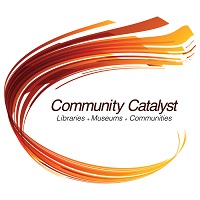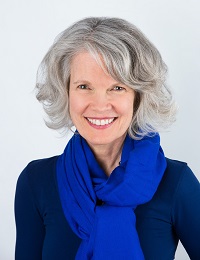
Editor’s Note: This past fall, IMLS launched Community Catalyst, a new initiative aimed at sparking a conversation around ways to help libraries and museums develop a deeper understanding of the best ways to work with communities to bring about positive change. Through a cooperative agreement with Reinvestment Fund, the agency scanned the literature and gathered input from the library, museum, and community revitalization fields. The results of that scan are part of a newly released report (PDF, 28MB). This is the latest in a series of blogs this month highlighting the initiative.
By Dr. Kathryn K. Matthew
Director
Remember that “Most Likely to Succeed” award in high school? If you have gone back to a high school reunion you know how unpredictable life’s ups and downs can be. The same holds for community change initiatives. Often it’s the unexpected scrappy little rag-tag groups that that succeed. You can dream about change and take your chances on stumbling into just the right partnerships and circumstances, or you can attempt to engineer it.
After asking community leaders of foundations, individual donors, nonprofit CEO’s, museums, and libraries as well as experts working in community development how they know when a project will be successful, it is clear that there are no simple answers. It is a mix of art and science, really mostly art. However, those with an engineering bent can take some solace in the fact that there are early indicators of those “Most Likely To Succeed”:
- Having both key community leaders AND stakeholders with a willingness to put their own time and resources into the effort
- Recruiting a mix of personalities and skills, as in a “driver,” a “diplomat/negotiator,” a “data scientist,” an “innovator,” and several if not dozens of “worker bees.”
- A willingness to seek out and employ many different “camera angles” to identify gaps in knowledge, missed opportunities, and potential pitfalls. This idea is best explained through analogy. Think of how engineers continue to develop rockets by learning from successful and unsuccessful launches. The engineers record video feeds from various perspectives and capture the data they need to redesign and successfully launch future rockets. You can do the same with multiple “outside-in” views mentioned in an earlier posting in this blog series
- True collaboration, not just lime-lighting. Those who really share and blend their resources in the collective efforts are more likely to succeed
- True adaptive leadership, not just slide talks with lots of circles and triangles, but actually letting the role of leader move between team members. Being able to change as the challenges change also predisposes partnerships to success
- So like a good social change engineer, how can you reverse-engineer this “Most Likely To Succeed” list? Keep asking “how” and “why” many times
Start by gathering the right people as the first two above entries suggest. You can do this by identifying key stakeholders (also called “actors” or ”agents of change”). “Stakeholder mapping” (or “network mapping or “actor mapping”) is one approach to do this. It is derived from examining social networks; including the relationships between individuals within those networks and each individual’s degree of influence on others. Recently, we mapped the main actors who could be recruited for an IMLS community change initiative, focused on veterans and military families (Community Salute), during a November 2016 Town Hall. We learned immediately that this approach builds a common understanding about the work at hand among the potential partners. It brought us closer to engineered solutions
Then look objectively at the community assets available to get the work done. There are several approaches to “asset mapping” (PDF, 2.2 MB) but all are predicated on an openness to the multiple “camera angles” mentioned above and discussed in an earlier blog. Look, objectively again, at who really has “skin in the game” among the various stakeholders. Is everyone really committed?
Finally, engage the broader community in assessing their own resources and creating a shared vision. You have done it for your team, your key stakeholders and partners, now open it up. This last step creates shared ownership necessary to keep a project going despite short-term setbacks as well as further defining and refining the social engineering necessary.
These steps are also fluid and can inform each other. For example, asset mapping or engaging the community might unearth new stakeholders (actors). While we often prefer a linear path forward, leading from one step to the next, in community change initiatives one often needs to cycle back and forth. Adapting, re-examining, and refining often occurs, and re-occurs, in creating something new. And while none of these steps is absolutely necessary as many examples of counter-intuitive successes attest, in combination, they are your best hope for simple and elegant solutions
Note that these resource hyperlinks are intended to be illustrative only, are not prescriptive, and do not imply endorsement of any particular resource or approach
==========================================

About the Author
Dr. Kathryn K. Matthew was confirmed by the Senate in September 2015 as the 5th director of the Institute of Museum and Library Services. You can send her comments on the Community Catalyst Initiative by emailing communities@imls.gov